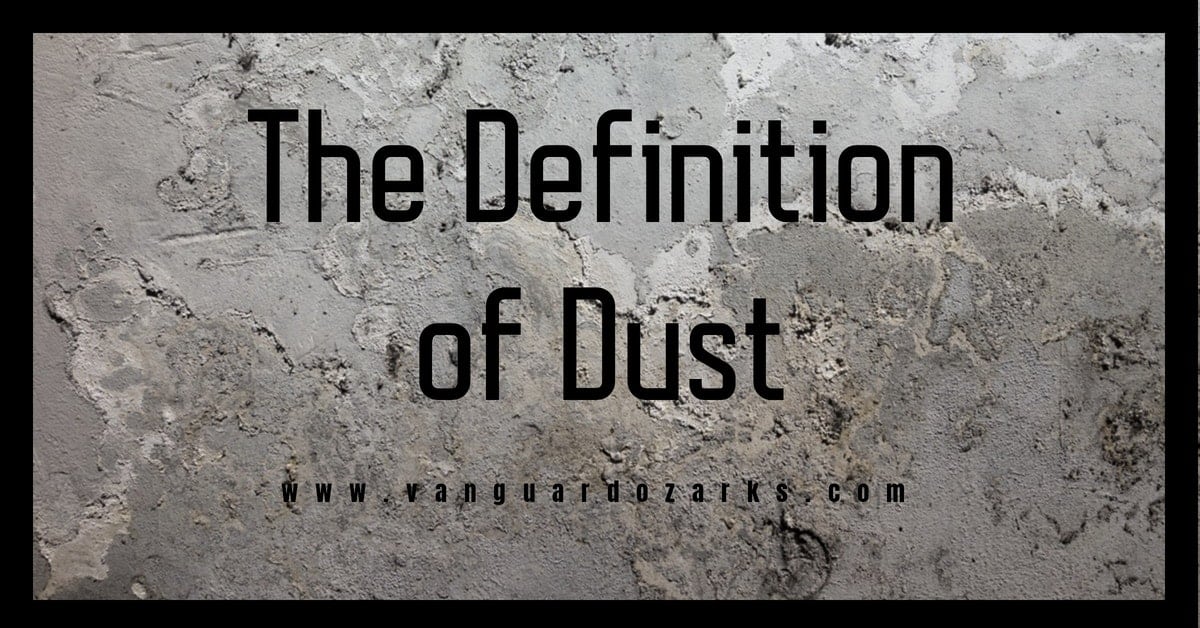Dust in the workplace or a classroom looks bad, damages hardware, carries pathogens, and contributes to a well-documented indoor phenomenon known as sick building syndrome.

The Damage Dust Does
Merriam-Websters Dictionary defines dust as:
- fine particles of matter (as of earth), or;
- the particles into which something disintegrates.
Source:
Note the definition implies, as it should, that dust is not merely made up of dirt--it is often made up of much worse.
The dust in your facility contains dirt, insect parts, pollen, mites, human skin scales and a host of other possibilities.
Rodent and cockroach droppings can trigger asthma and allergy attacks and, if seen by occupants, generate complaints about the cleanliness of the facility.
Allowing dust to build up in larger dust bunny size amounts can also mean occupants have a higher chance of exposure — to whatever may be in it — if the dust becomes airborne.
Challenges with indoor dust go back to the 1970s during the first oil crisis.
Buildings were sealed up tightly to control energy consumption, which reduced natural airflow and led to the circulation of dust brought indoors by facility occupants.
Ultimately, this led to two significant problems--the first being occupant health.
Dust in a home or office can carry with it all types of pathogens that can cause health problems.
Back in the 1970s, after the first oil crisis, one of the reasons for “Sick Building Syndrome” was the fact that dust, on surfaces and in the air, was trapped inside the building.
HVAC systems at that time were adjusted so that they kept recirculating heated or cooled air.
This reduced energy costs, but increased indoor dust build-up significantly. This also increased humidity in these buildings, and because dust is often made up of biological contaminants, the moisture helped the germs and bacteria in dust survive and thrive.
The result was that many building occupants began to complain of headaches, dizziness, nausea, difficulty concentrating, and this could be just the beginning of their health problems.
The second issue pertains to the buildup of dust on and inside of electronic equipment, specifically computers, which can lead to blocked fans, overheating, component damage, computer crashes, and potential data loss.
Additionally, when a computer detects overheating, it will typically throttle computer performance to maintain heat levels, which adversely affects operator output and productivity.
Ultimately, excessive indoor dust, which affects computers, will lead to one of two expensive technical procedures--repairs or routine physical maintenance.
Dealing With Dust
Who would have guessed that the last thing a janitorial service provider should do to clean a dusty room was to dust?
As it turns out, superior methods exist:
- Proactive prevention with high-performance entry and walkway mats.
- Microfiber.
- Squeegees, and;
- Vacuuming.
Conventional dusting methods with cloths knocks more dust into the air than it clears away.
High-performance walkway and entrance matting will capture and trap a significant volume of dust before it has the opportunity to circulate through a facility.
Vacuuming vents and high surfaces reduces the amount of dust knocked into the air during the cleaning process.
The pockets in microfiber towels, when combined with a diluted cleaning agent, will remove dust, pollen, and bacteria from hard surfaces.
Applying a squeegee after wiping down the surface will remove any lingering particles and speed up the drying process.
Vacuuming the floor and servicing walkway mats as a final step will remove the majority of the remaining particles.
References & Resources
- Effects of dust and dirt
- Should You Dust or Vacuum First for Better Air Quality?
- Pollen Everywhere!: How to Clean Pollen Effectively
Takeaway
Dust isn't just dirt; it's often made of broken-down particles from something much more disgusting, and can often carry viral pathogens that contribute to occupant illness.
Regardless of the makeup of dust particles, breathing it has been shown to significantly impair occupant performance and health, with symptoms often remaining until the occupant exits the facility--commonly referred to as sick building syndrome.
Further, high levels of dust will negatively impact the performance of computer hardware, resulting in reduced operator productivity and, likely, an increase in worker or student frustration.
Removing dust in modern facilities with a clear focus on cleaning for health requires trained service providers with specialized equipment and a well-documented process to ensure that dust is not merely knocked around until it settles on a new surface.
Contact us today and discover why Vanguard Cleaning Systems® is the Standard of Clean® for businesses throughout Northwest Arkansas, Missouri, and Oklahoma.
In Oklahoma, dial 918-960-4450
In Arkansas, dial 479-717-2410
In Missouri, dial 417-812-9777

